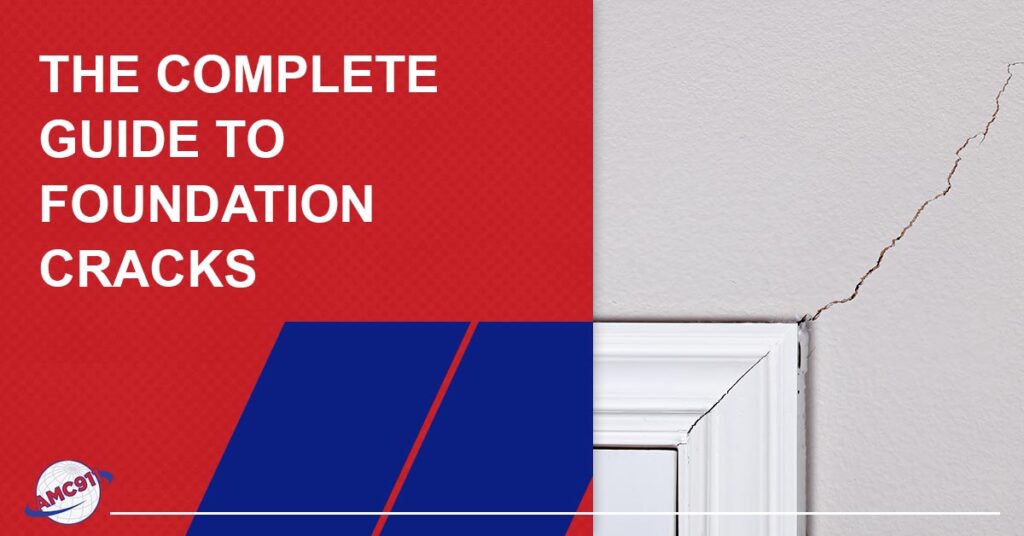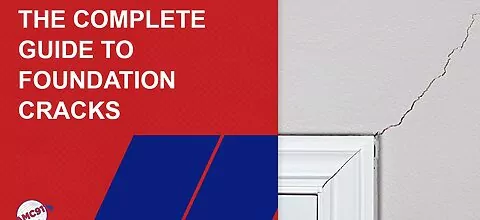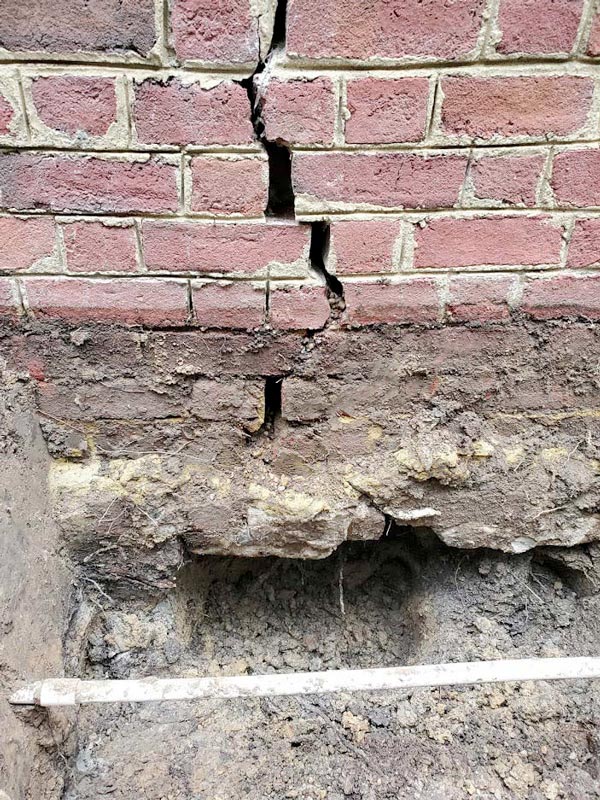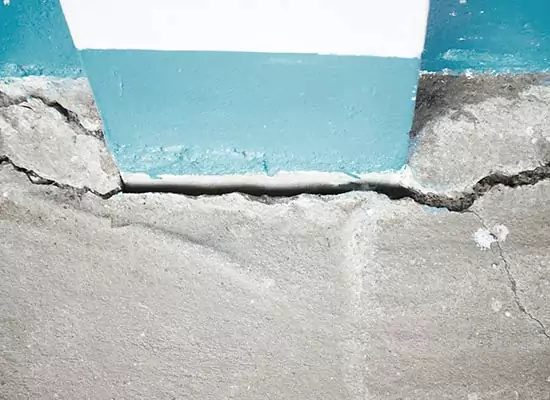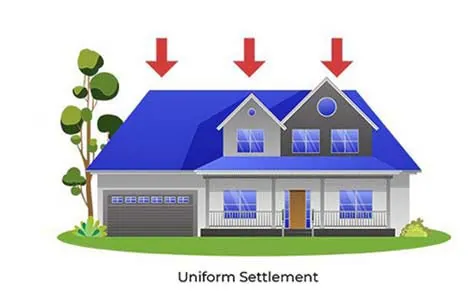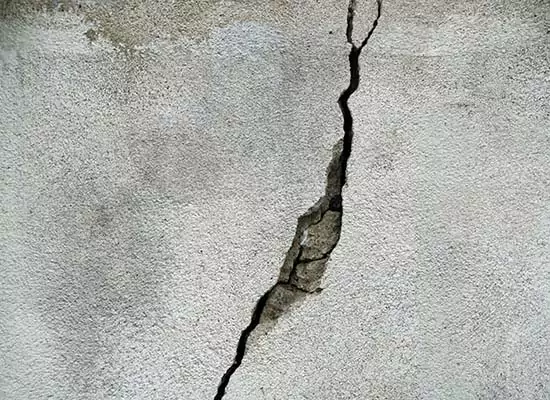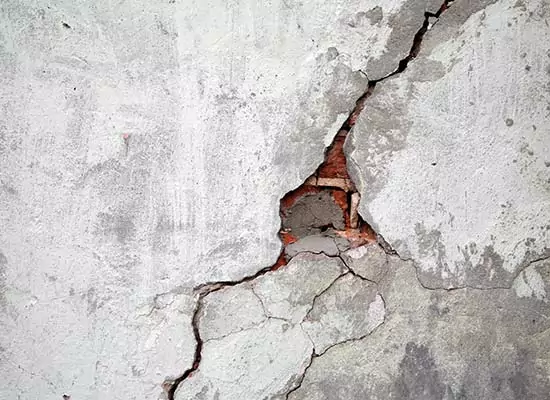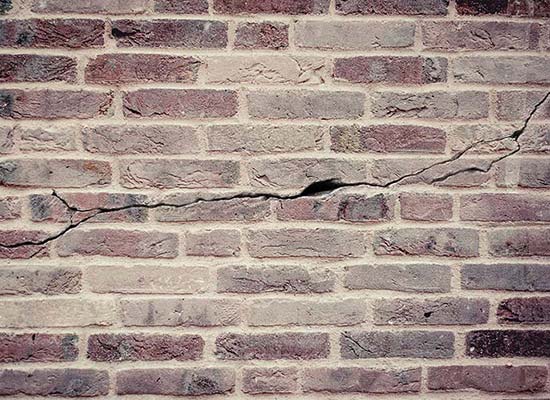What Causes Foundation Cracks?
A variety of factors can cause foundation cracks. However, the two most common reasons are hydrostatic pressure and differential settlement. Both can cause severe structural damage.
Warning Signs of Foundation Problems
- Cracks in walls, floors, and ceilings
- Stair step cracks in brick or masonry
- Bowed and/or cracked foundation walls
- Doors and windows that don’t open and close properly
- Uneven floors
- Chimneys and porches that are pulling away from the foundation

If you notice any of these signs, contact AMC911 today and schedule a foundation evaluation. Early detection and repair can save you significant money and prevent further damage to your home.
When Should I Be Worried About Foundation Cracks?
Foundation cracks are common in buildings, but not all cracks are created equal. Some cracks are merely cosmetic, while others can indicate more serious issues requiring immediate attention. If you’re a homeowner, knowing when you should be worried about foundation cracks and when you shouldn’t is important.
Vertical vs. Horizontal Cracks
Vertical cracks less than 1/4 inch wide are usually not a cause for concern. However, if the crack is wider than 1/4 inch or runs diagonally, it’s more likely to be a significant problem.
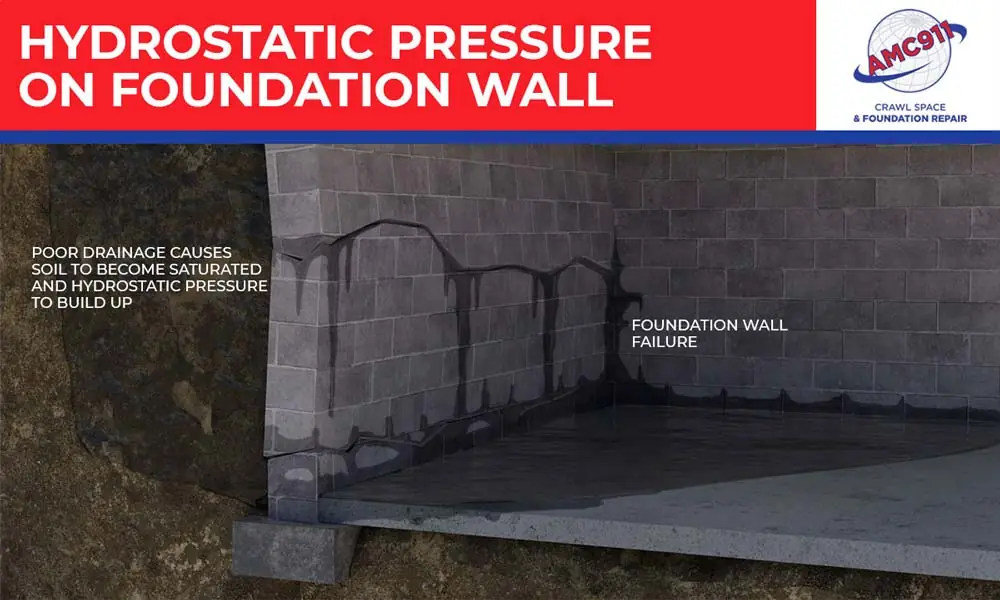
Horizontal cracks are the most serious foundation cracks and if they’re in a basement wall, they’re typically a sign of structural damage caused by hydrostatic pressure.
What Other Signs Do You See?
If the crack is accompanied by bulging or leaning walls, sagging floors, or doors and windows that are hard to open or close, those are all signs of severe foundation damage and require immediate attention.
How Old Is The Building?
Older homes are more likely to have foundation issues and the longer a foundation crack goes untreated, the worse it will become. If you notice a new crack in a recently built home, addressing it as soon as possible is essential to prevent any future problems.
Are Cracks in A Foundation Normal?
Foundation cracks can be common, but they should never be ignored or dismissed as inconsequential. The foundation is the very basis of the house, and any significant damage can lead to serious structural issues that ultimately compromise the stability and safety of the building.
While some cracks in a foundation may be small and relatively harmless, others can be a warning sign of more severe problems. Therefore, it’s essential to have any foundation cracks examined immediately to determine their severity and cause. If left unaddressed, even minor foundation damage can considerably weaken the house’s structure, leading to costly repairs.
How to Fix Foundation Cracks and Prevent Future Damage
The good news is that there are many ways to fix foundation cracks and prevent future damage from occurring, including underpinning and carbon fiber straps.
Underpinning to correct differential settlement
For foundation cracks caused by differential settlement, the usual repair solution is underpinning using piers. This technique involves extending the foundation down to load-bearing soil that can support the structure. By adding additional support to the foundation, underpinning can help prevent future damage and stabilize the structure.
Carbon fiber straps to repair bowed and/or cracked foundation walls
Carbon fiber straps are a common solution for repairing foundation cracks caused by hydrostatic pressure. These lightweight, high-strength straps are applied to the surface of the foundation and anchored in place with epoxy.

Carbon fiber straps are particularly useful for repairing horizontal cracks in concrete foundations, as they can help distribute the structure’s load evenly across the affected area. Carbon fiber straps are also highly corrosion-resistant and can provide long-lasting support for the foundation.
In addition to underpinning and carbon fiber straps, several other techniques for repairing foundation cracks exist. These include wall plate anchors and helical wall anchors.
The best solution for your specific situation will depend on various factors, including the cause, size, and location of the cracks, the age and condition of the foundation, and the underlying soil conditions.
Do Foundation Cracks Make You Nervous?
Cracks in your foundation – whether it be brick, concrete, or masonry – can be daunting. You might immediately jump to thoughts of repairs, structural damage, and decrease in the value of your property.
Before you worry, remember that not all foundation cracks are bad.
In fact, most foundation cracks are completely natural and can be easily fixed.
It is important to know the types of foundation cracks so you can diagnose yours. Make the best decision for your home.
Different Types of Settlement
The first step in understanding foundation problems is to know the different types of settlement. Certain types of settlement are more dangerous than others. Foundation settlement can essentially be categorized into two different types:
Uniform Settlement
each point of the structure sinks into the ground at the same time and same capacity. Uniform settlement can occur when all parts of a building rest on the same type of soil. No damage is done to the structure if the foundation settles uniformly as a whole. Damage can still occur to surrounding drainage systems, attached buildings, and underground utility lines.
Differential Settlement
The opposite of uniform settlement. This occurs when different points of the structure settle while others remain stable. This is the main cause of dangerous foundation cracks and other structural problems.
If every part of a building is resting on the same type of soil, differential settlement may not be an issue. However, in most cases, soil types, loads, and structural systems differ throughout a structure. When a building like this settles differentially, it can cause framework issues. These include sloping floors and bowing walls. They could also include leaning chimneys, and doors and windows that don’t shut.
One of the main issues that occur when a foundation has settled differentially is foundation cracks. Understanding the types of foundation cracks is important for everyone Virginia Beach & Hampton Roads. Homes in this area are prone to differential settlement cracks, especially properties located near the water.
Read more: How to Repair Cracks in A Concrete Garage Floor.
Vertical Cracks: Don’t Worry, They’re Normal
Non-threatening foundation cracks exist?! Yes, they sure do.
If your foundation cracks are vertical, then you most likely don’t have anything to worry about. Vertical cracks that are slightly diagonal (within 30 degrees) are not cause for concern.
Vertical foundation cracks are very common and can be seen in most households. They can occur due to concrete tension within the first few years of construction. They also form because of rains that create water pressure against the foundation.
Fixing vertical foundation cracks is simple. Here’s what you should do:
- Mend the crack with an epoxy or polyurethane injection. These materials are lightweight, flexible, and waterproof – and can permanently seal cracks in your foundation.
- Protect your foundation from water intrusion to prevent future cracks. If your gutters are clogged, water could be pouring over directly onto your foundation. Also, short downspouts can allow water to pool up around your home. Make sure that your gutters are clear of debris and that your downspouts are extended at least 5ft away from your home. You may have to do some strategic landscaping if your house is on a hill that directs water down onto your foundation.
Diagonal Cracks: A Little Bit More Worrisome
Diagonal cracks usually cause more concern than vertical cracks because they indicate differential settlement that can lead to serious structural issues in your home. When parts of your home settle more quickly than others, or sections of your home settle while other sections remain stable, it can cause uneven (or differential) settlement. If you have noticed diagonal cracks running about 30 to 75 degrees from vertical, it is important to get your foundation looked at.
With a differential settlement, the foundation moves in two different directions, causing both vertical and horizontal tension. This creates diagonal foundation cracks. Diagonal cracks are sometimes hairline cracks. Diagonal cracks often occur in homes built on a hill, or homes with rapidly changing soil conditions due to excessive rain or drought.
You repair diagonal cracks the same way that you repair vertical ones. However, it takes more material to prevent future movement. Also, it is important to determine where the exact settlement is located with diagonal foundation cracks so that measures can be taken to prevent settlement there in the future.
Horizontal Cracks: You Don’t Want These
There are several different types of horizontal foundation cracks. They all indicate dangerous structural problems.
When the force of the ground is too much for a basement wall to bear, it bows inward and develops a mid-height horizontal crack. If you have a concrete or block basement foundation, your home is probably prone to this issue.
Other causes of horizontal foundation cracks include damage from heavy equipment near the wall, frost heave, or excessive backfilling.
If you have small horizontal cracks on a straight wall that is not bowing yet, it is important to closely monitor those cracks to see if the damage worsens. Be sure to call a foundation repair specialist to inspect your horizontal foundation cracks and implement the proper repairs.
Stair-Step Cracks: These Are Dangerous
Stair-step cracks are diagonal cracks that occur in concrete block and brick foundations. The crack starts along a joint or near the end of the wall and climbs up or down. Like diagonal cracks, differential settlement causes stair-step cracks.
Learn more about – What Causes Cracks Where a Wall Meets the Ceiling?
Get A Free Estimate And Inspection
Call AMC911 Crawl Space & Foundation Repair today. We come inspect your property and evaluate your foundation. Our experts have years of experience dealing with foundation cracks and know the exact repairs that need done.
We value honesty and integrity in all that we do. We give you only the repairs you need for the right price. Call today to start.

